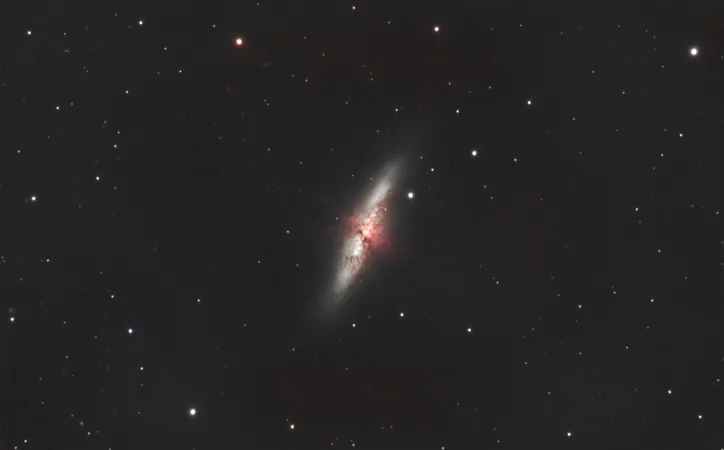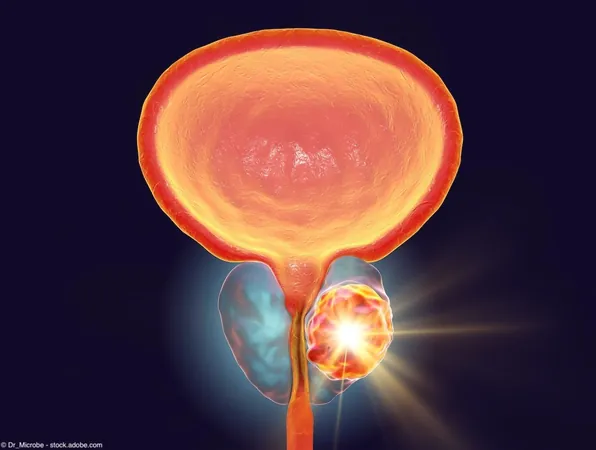
Unlocking the Cosmos: A Beginner's Guide to Astronomical Catalogs
2025-09-01
Author: Yu
Humanity's fascination with the stars isn't new. Dating back to the 12th century B.C.E., the Babylonians crafted one of history's first star catalogs, followed by an even more detailed compilation around 1000 B.C.E., which detailed the movements of not just stars but also the Sun, Moon, and planets. Similarly, the Mayans meticulously tracked celestial events using painted calendars and stone inscriptions, noting eclipses and possibly even astronomical precessions.
Fast forward to today, where advanced telescopes and sophisticated technology enable us to record celestial positions with stunning precision. The European Space Agency's Gaia satellite stands out as the leading cosmic surveyor, having charted the locations of around 1 billion stars and celestial objects. However, for budding astronomers, the sheer number of catalogs used to identify deep-sky objects can be daunting. Let’s break down some of the most essential ones.
Messier Catalog: Your First Step into the Stars
The Messier catalog is often the first reference point for new stargazers. Created by 18th-century French astronomer Charles Messier, it features 109 bright objects (with six later additions) that could easily be mistaken for comets. All these objects are visible from the Northern Hemisphere, making them accessible to amateurs. They include eye-catching galaxies, star clusters, and nebulae, each designated with an ‘M’ prefix. A prime example is the stunning Whirlpool Galaxy, known as M51.
The New General Catalogue (NGC): Expanding Your Horizon
Next up is the New General Catalogue, or NGC, compiled by Danish astronomer John Louis Emil Dreyer in 1888. This extensive compilation lists 7,840 objects, primarily galaxies, but also features nebulae and star clusters, all meticulously ordered by right ascension. Dreyer’s work was inspired by earlier catalogs by William and Caroline Herschel and sparked two supplement collections, known as the Index Catalogues (IC), which add another 5,386 objects to the mix.
The Sharpless Catalog: A Nebula Lover's Dream
For those enchanted by nebulae, the Sharpless catalog is a treasure trove. Introduced by American astronomer Stewart Sharpless in 1953, the catalog initially featured 142 objects, later expanded to 312. This list is primarily composed of HII regions—vibrant emission nebulae rich in hydrogen—with a few planetary nebulae sprinkled in. Objects are marked with ‘Sh 2’ to signal their origin from Sharpless’ second catalog. A notable example is the mesmerizing Lagoon Nebula, listed as Sh 2-25.
Navigating the Abell Catalogs: Dual Paths to Galactic Wonders
Confusion may arise with the two Abell catalogs, both crafted by astronomer George O. Abell. One catalog focuses on rich galaxy clusters, containing 4,073 clusters that require a minimum of 50 galaxies to qualify. It’s a challenging adventure meant for large telescopes and pristine dark skies. The second catalog, published in 1966, lists 86 planetary nebulae—though some objects were later reclassified as different types of nebulae. Examples include Abell 21, famed as the Medusa Nebula, and Abell 1656, known as the Coma Galaxy Cluster.
These catalogs provide a glimpse into the worlds awaiting amateur astronomers, and there are certainly many more for those advanced astrophotographers in pursuit of rare celestial sights. So use these catalogs as your road map on your cosmic journeys. Happy stargazing!


 Brasil (PT)
Brasil (PT)
 Canada (EN)
Canada (EN)
 Chile (ES)
Chile (ES)
 Česko (CS)
Česko (CS)
 대한민국 (KO)
대한민국 (KO)
 España (ES)
España (ES)
 France (FR)
France (FR)
 Hong Kong (EN)
Hong Kong (EN)
 Italia (IT)
Italia (IT)
 日本 (JA)
日本 (JA)
 Magyarország (HU)
Magyarország (HU)
 Norge (NO)
Norge (NO)
 Polska (PL)
Polska (PL)
 Schweiz (DE)
Schweiz (DE)
 Singapore (EN)
Singapore (EN)
 Sverige (SV)
Sverige (SV)
 Suomi (FI)
Suomi (FI)
 Türkiye (TR)
Türkiye (TR)
 الإمارات العربية المتحدة (AR)
الإمارات العربية المتحدة (AR)